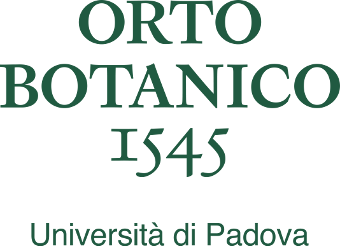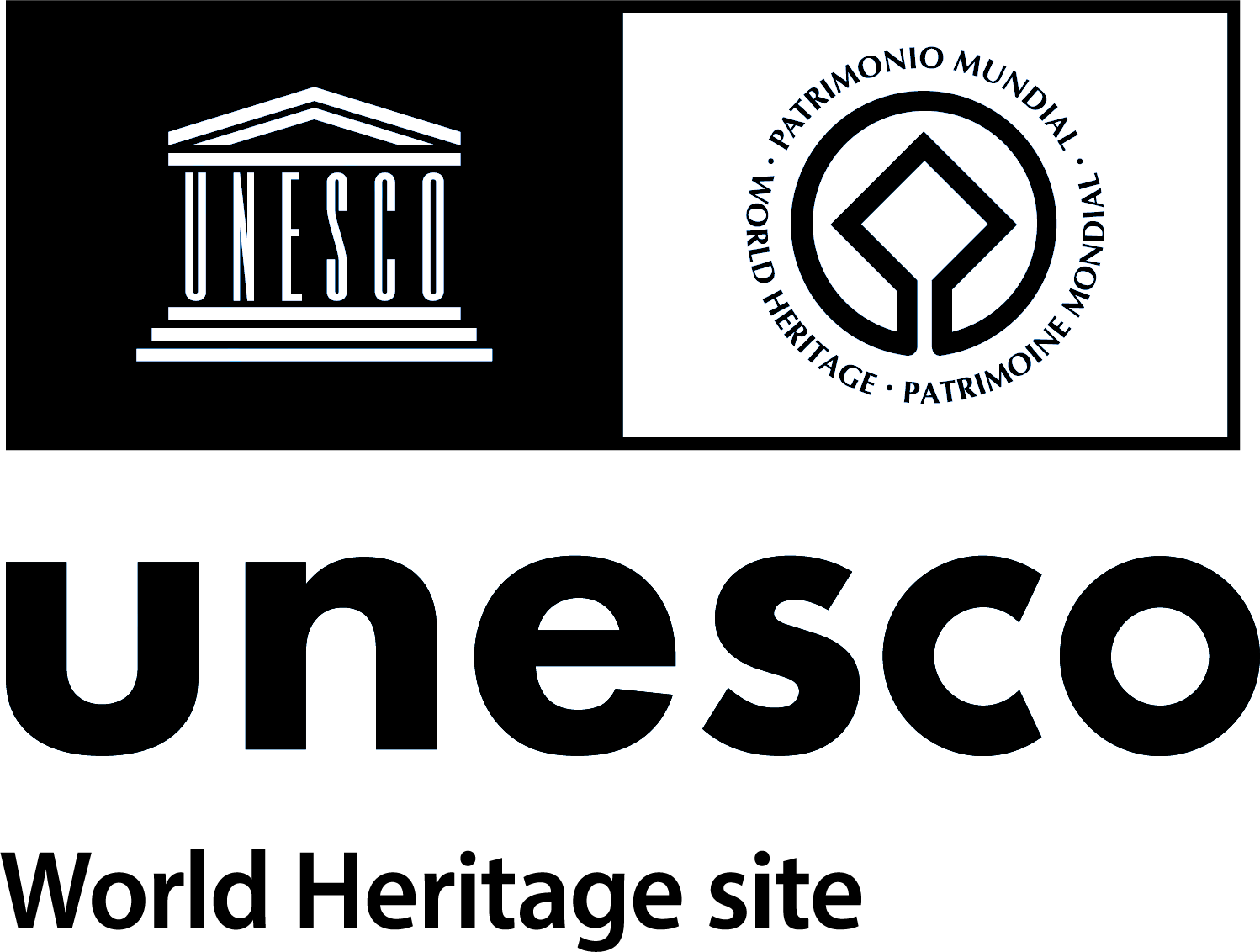Genetic diversity in space and time
Research Projects - Padua Botanical Garden
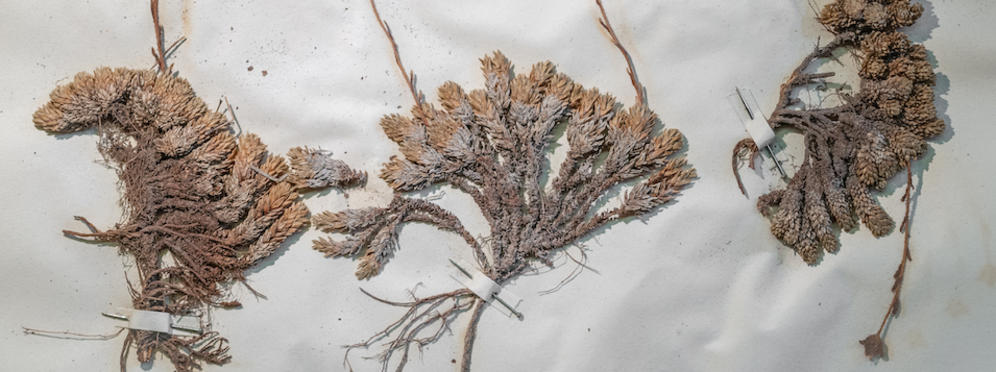
Over the last few hundred years, global ecosystems have undergone a profound transformation at the hands of human beings. Anyone studying the ecological and evolutionary changes during this period of intense global change can find a useful resource in herbaria which, by virtue of their temporal dimension, are able to provide data of fundamental value. Thanks to their increasing digitalization, along with the facility of sequencing DNA taken from preserved plant material, they are becoming invaluable as an aid to understanding the ecological and evolutionary responses of species to environmental changes.
Research programmes, carried on together with numerous partner institutions, combine next-generation sequencing, population genomics and phylogenetic approaches in studying the evolution of plants, from micro to large scale. With the development of bioinformatic solutions, the wealth of metadata deriving from digitalization projects can be recorded, archived, integrated and made widely accessible to researchers. Finally, collaborations with experts in the History of Science afford the possibility of integrating the information gathered and reconstructing the path traced by the collections.
ITALIANO
GOETHEOME. Genoma della palma di Goethe, filogeografia e genomica dell’adattamento in Chamaerops humilis
La Palma di Goethe (Chamaerops humilis) è l’esemplare più antico (1585) dell’Orto botanico di Padova e uno dei punti principali del percorso di visita.
Il progetto mira ad ottenere il genoma della palma di Goethe e a confrontare la sua diversità genetica con quella delle popolazioni naturali della specie. Utilizzando metodi all’avanguardia, verranno indagati i meccanismi che hanno contribuito alla distribuzione attuale della specie, ad esempio gli elementi chiave nel controllo dei tratti di crescita, e altri processi come l’invecchiamento. Ampliando queste conoscenze sarà possibile far luce sui processi coinvolti nelle risposte delle piante longeve agli stimoli ambientali e la loro capacità di sopravvivere in diverse condizioni, elemento essenziale per valutare la loro suscettibilità ai cambiamenti in atto.
I dati raccolti porteranno ad individuare la regione geografica di origine della palma, attualmente ignota, e saranno utilizzati nell'ambito di ulteriori ricerche di carattere storico condotte presso biblioteche e archivi (ad esempio l'Archivio di Stato di Venezia), al fine di ottenere conferme e ulteriori informazioni sull’arrivo della pianta a Padova.
Referenti del progetto: Dott.ssa Núria Beltrán-Sanz, Prof. Francesco Dal Grande
In collaborazione con: Carola Greve, LOEWE Centre for Translational Biodiversity Genomics, Frankfurt Am Main (DE); CREA - Difesa e Certificazione, Palermo; Montgomery Botanical Center, Miami (US)
Parole-chiave: Palma di Goethe, areale, genoma
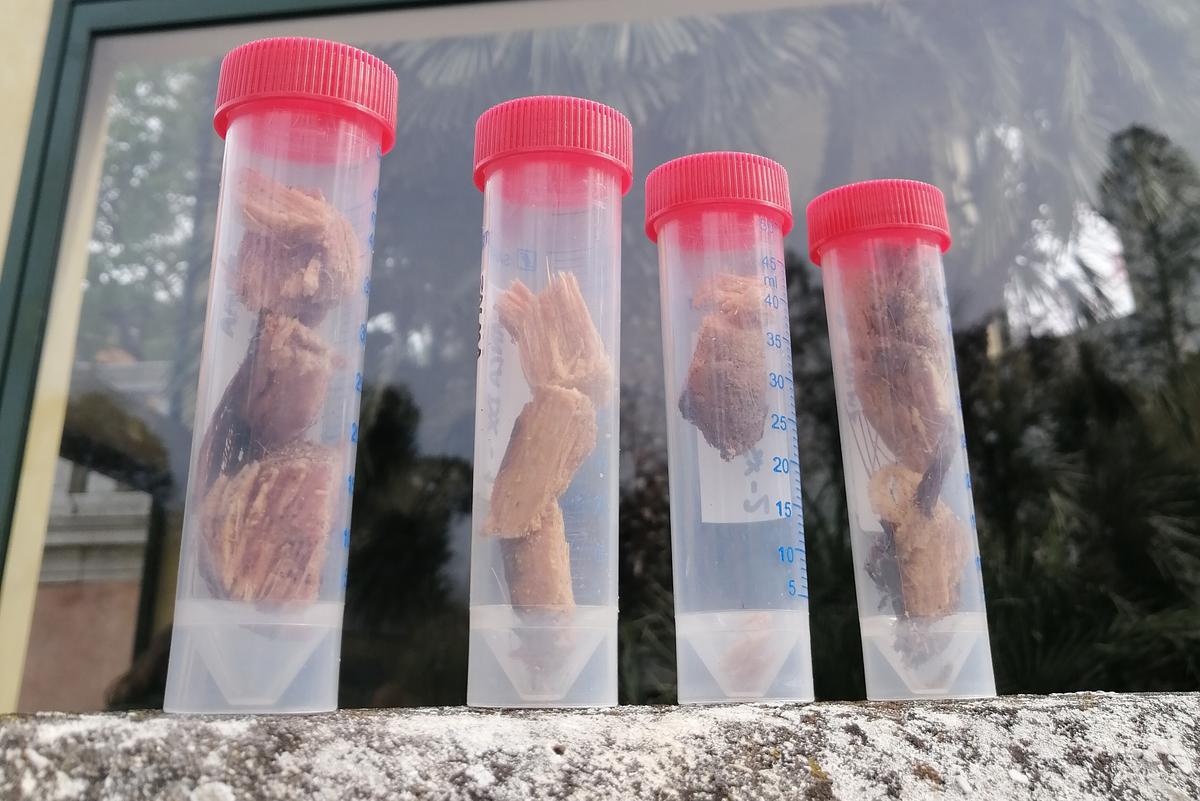
TIMAEUS. Studiare l'adattamento ai cambiamenti climatici attraverso gli erbari
Il cambiamento climatico ha accentuato i tassi di estinzione delle specie negli ultimi decenni. Le specie di montagna sono particolarmente vulnerabili agli effetti del cambiamento climatico e quindi hanno sofferto di più: alcune sono scomparse del tutto, altre hanno ridotto in modo significativo il loro habitat. Quelle rimaste hanno dovuto cambiare e adattarsi alle nuove condizioni per sopravvivere. Il progetto intende indagare la natura di questi cambiamenti, comprendendo come le specie si siano adattate e in risposta a quali fattori di stress.
Migliaia di esemplari conservati nelle collezioni dell'erbario storico, raccolti nell'arco di due secoli da botanici, biologi, amanti della natura ed esploratori, offrono un'opportunità unica di esplorare e quantificare i cambiamenti avvenuti nel tempo all'interno di una determinata specie. Raccogliendo e studiando campioni freschi delle specie nei loro habitat odierni sarà possibile confrontare la diversità genetica passata e presente e capire quanto e come la specie sia cambiata e quali siano le implicazioni per la sua sopravvivenza futura.
Referenti del progetto: Dott.ssa Yasaman Ranjbaran; Prof. Francesco Dal Grande
In collaborazione con: MUSE - Museo delle Scienze, Trento; Stefan Prost, University of Oulu (FI)
Parole-chiave: genoma, erbari, cambiamento climatico, adattamento
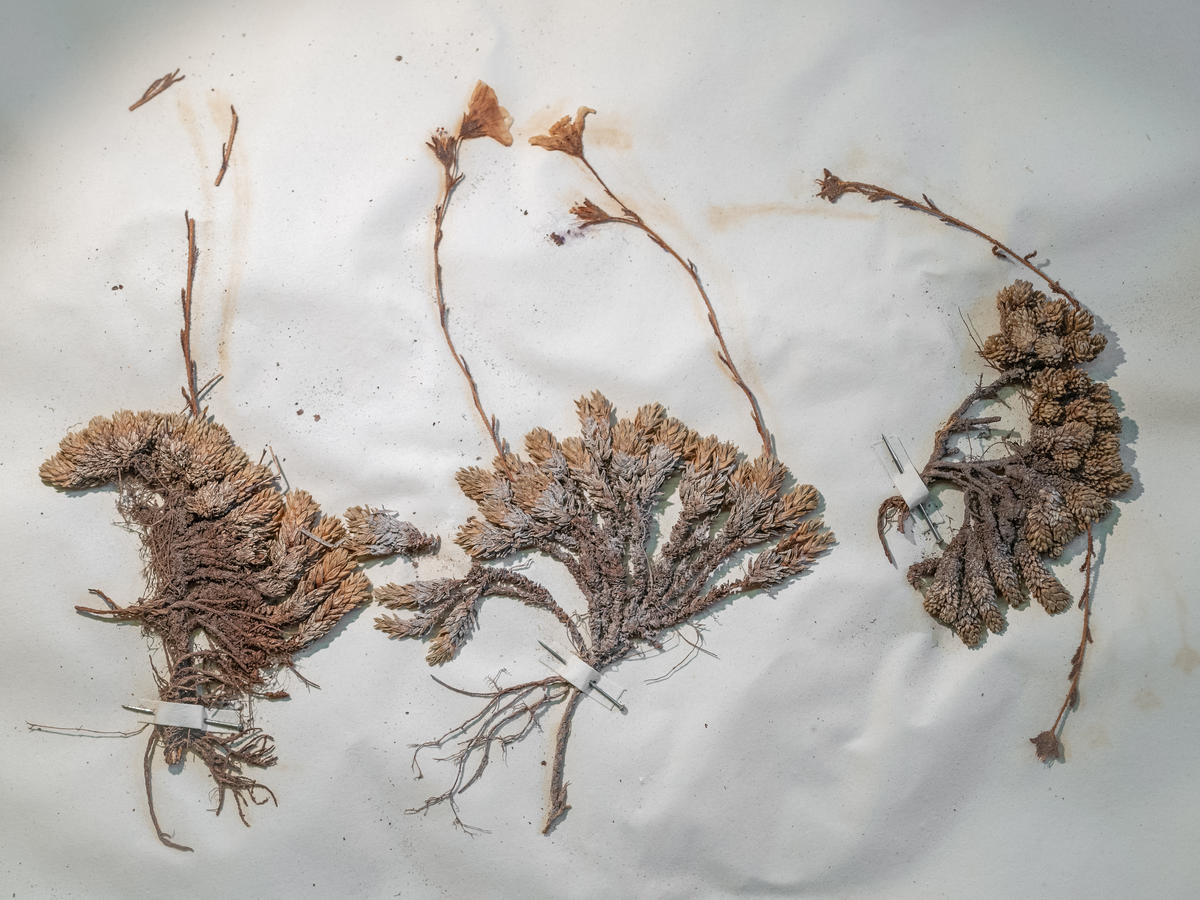
DNA barcoding - La collezione Saccardo
La collezione micologica di Pier Andrea Saccardo, Prefetto dell’Orto botanico di Padova dal 1879 al 1915, è composta da quasi 70.000 esemplari comprendenti oltre 4.000 tipi, ovvero funghi utilizzati per la descrizione di una nuova specie e quindi unici. Lo scopo di questa ricerca era recuperare i dati molecolari dagli esemplari tipo conservati nella collezione per riesaminare tassonomicamente specie descritte oltre un secolo fa e per aumentare le informazioni molecolari a livello di specie depositate nei database pubblici.
Referenti del progetto: Dott. Nicolò Forin, Dott. Sebastiano Nigris, Prof. Barbara Baldan
In collaborazione con: Università degli Studi di Torino
Parole-chiave: funghi, Saccardo, DNA barcoding
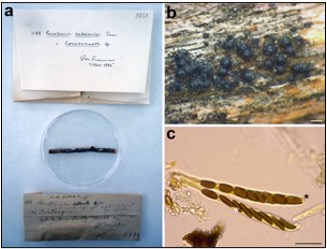
Tra storia e botanica: Pier Andrea Saccardo e la sua scuola
Il progetto di ricerca mira a ricostruire la vita, l’opera e l’attività di Pier Andrea Saccardo (1845-1920), prefetto dell’Orto botanico di Padova tra Otto e Novecento. Tra i maggiori micologi al mondo, il suo progetto scientifico più ambizioso fu la Sylloge fungorum omnium, opera iniziata nel 1882 con la classificazione di tutte le specie di funghi note all’epoca.
Il progetto si concentra sull’analisi del contributo dato da Saccardo alla storia della botanica, attraverso lo studio dei suoi lavori, come la Botanica in Italia, dell’Iconoteca dei botanici, un’ingente raccolta di ritratti di botanici da lui iniziata, ma anche della scuola di botanici che con lui si formò, facendo propria un’attenzione per la storia della botanica, dei suoi protagonisti, dei suoi luoghi e delle sue collezioni. Tra i suoi numerosi allievi si ricordano l’algologo Achille Forti e i botanici Giovanni Battista De Toni, Carlo Spegazzini e Alessandro Trotter. Grazie a questo studio è possibile fare luce sulla storia dell’Orto e del Museo botanico di Padova tra Otto e Novecento, anche attraverso i volumi e i numerosi documenti d’archivio di Saccardo conservati presso la Biblioteca storica di medicina e botanica Vincenzo Pinali Giovanni Marsili.
Referenti del progetto: Prof.ssa Elena Canadelli, Dott.ssa Claudia Addabbo, Dott.ssa Tiziana Beltrame, Dott. Luca Tonetti
Parole-chiave: Saccardo, iconoteca, storia della botanica, scuola di Saccardo
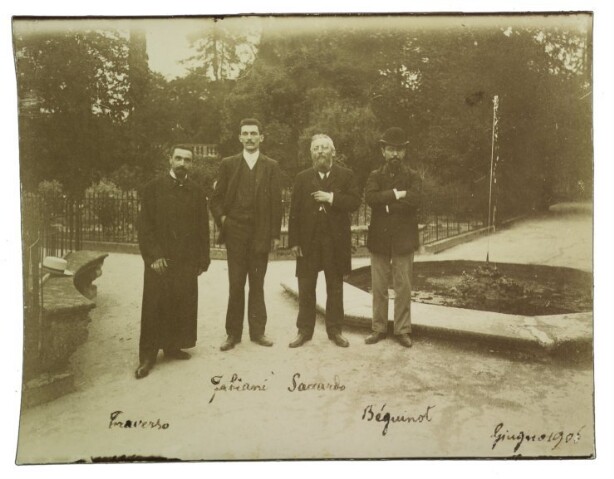
Digitalizzazione dell’algario di Achille Forti
Il progetto mira a digitalizzare una delle collezioni più prestigiose conservate nel Museo botanico di Padova: l’algario di Achille Forti (1878-1937), composto da oltre 100 pacchi, per un totale di circa 30.000 campioni provenienti da varie parti del mondo e da vari raccoglitori tra fine Ottocento e la prima metà del Novecento. Grazie ai fondi del National Biodiversity Future Center (NBFC), Spoke 7, linea 7 dell’Università di Padova, sarà possibile digitalizzare e procedere a una prima decifrazione e interpretazione delle preziose informazioni presenti sui cartellini dei fogli dell’algario. Grazie alla digitalizzazione di questa collezione si potrà così ulteriormente promuovere lo studio scientifico e storico dell’algario Forti, puntando ad ampliare le collaborazioni con altre studiose e studiosi del settore, anche grazie a uno studio comparativo dei maggiori algari coevi a quello di Forti conservati in Italia e a una sinergia con i progetti di digitalizzazione di queste collezioni attualmente in corso in Italia.
Referenti del progetto: Prof.ssa Elena Canadelli, Dott.ssa Claudia Addabbo, Dott.ssa Dalila Giacobbe, Dott.ssa Rossella Marcucci
Parole-chiave: digitalizzazione, algario, Achille Forti
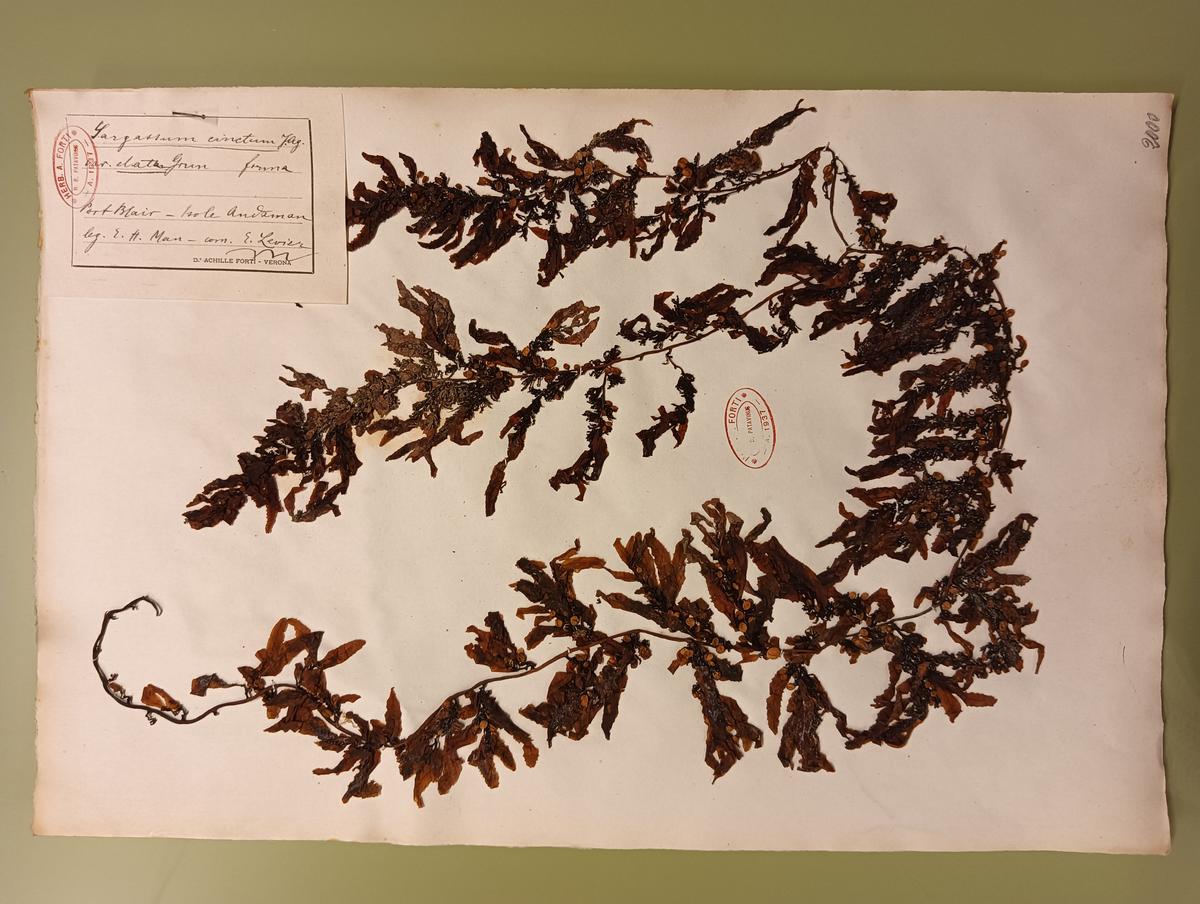
Achille Forti e le sue collezioni. Studiare la biodiversità tra storia e scienza
Il progetto intende studiare la figura, l’opera e le collezioni del botanico veronese Achille Forti (1878-1937). Allievo di Pier Andrea Saccardo, apportò fondamentali contributi all'algologia, diventando un punto di riferimento per molti algologi del tempo. Il Museo botanico di Padova conserva le sue collezioni, tra cui l’Algario, la Diatomoteca e la Collezione di lastre fotografiche, mentre la Biblioteca storica di medicina e botanica Vincenzo Pinali e Giovanni Marsili conserva i volumi e la miscellanea di argomento botanico.
La ricerca ricostruisce l’attività scientifica di Forti e la storia dell’Algario e della Diatomoteca, quali archivi di biodiversità. L'Algario (che sarà digitalizzato nell'ambito del progetto "Digitalizzazione dell’algario di Achille Forti" - v. sopra) consta di oltre 100 pacchi, per un totale di circa 30.000 campioni provenienti da tutto il mondo e risalenti agli anni 1850-1936, raccolti da Forti stesso, da colleghi oppure provenienti da altri erbari. La Diatomoteca è costituita da circa 7900 vetrini con diatomee fossili e recenti, raccolte e preparate da Forti o provenienti da altre collezioni.
Lo studio integrato di collezioni così ricche e stratificate, degli scritti e della corrispondenza di Forti apporta interessanti contributi alle attuali ricerche sulla biodiversità, attraverso il confronto tra passato e presente e l'intreccio di storia e scienza.
Referenti del progetto: Dott.ssa Claudia Addabbo, Prof.ssa Elena Canadelli, Prof. Tomas Morosinotto
Parole-chiave: Achille Forti, algario, collezioni, biodiversità, storia della botanica
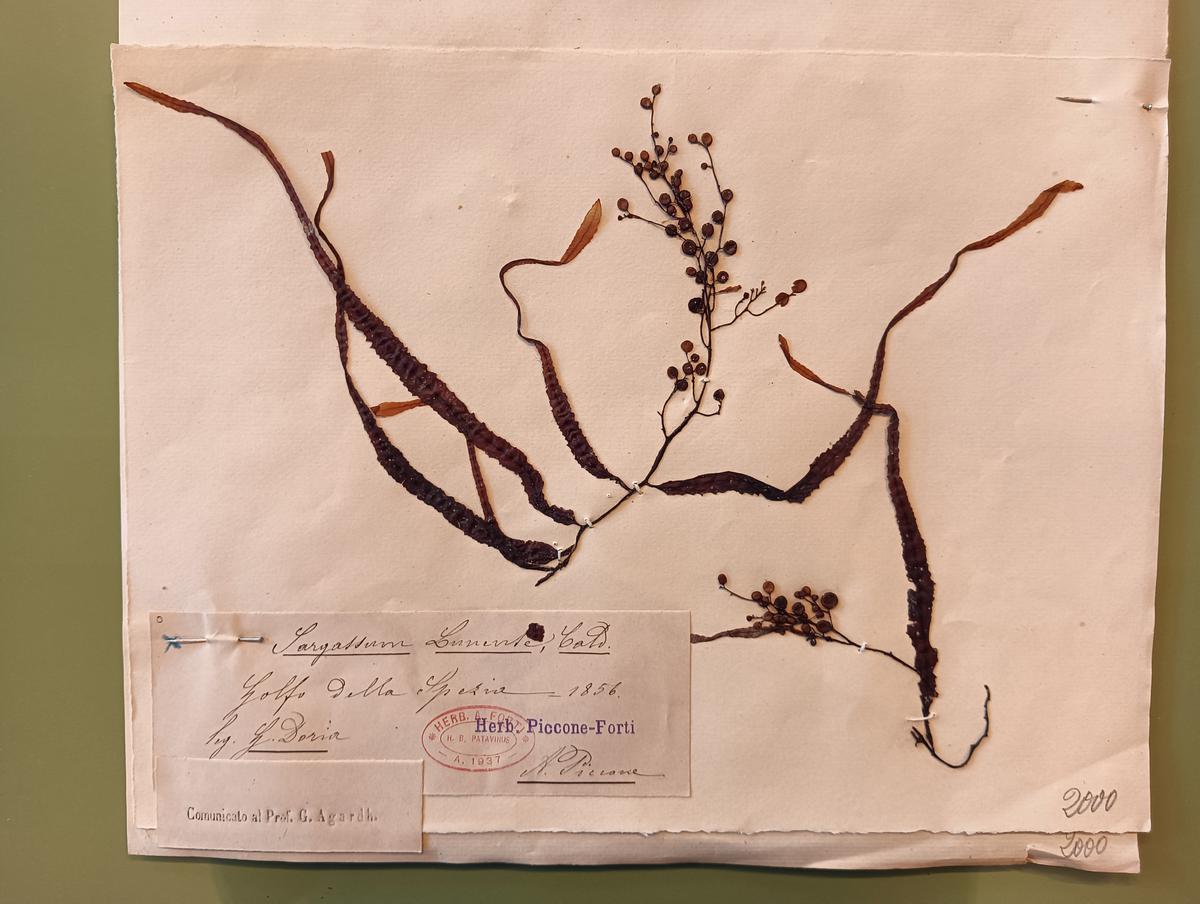
I micromondi delle galle: la collezione cecidologica di Alessandro Trotter al Museo Botanico dell’Università di Padova
Il progetto è finalizzato allo studio e alla valorizzazione della collezione di ‘galle’ (manifestazioni di crescita anomala dei tessuti della pianta, con una struttura tipica, causate dall’interazione con un organismo esterno, come insetti, acari, batteri, funghi), raccolta da Alessandro Trotter (1874-1967), allievo di Pier Andrea Saccardo (1845-1920), e oggi conservata al Museo Botanico dell’Università di Padova.
Gli obiettivi sono tre:
1) censire i campioni dell’erbario cecidologico di Trotter, grazie alla collaborazione del Prof. Mauro Mandrioli (Dipartimento di Scienze della Vita, Università degli Studi di Modena e Reggio Emilia)
2) ricostruire la fondazione e l’istituzionalizzazione disciplinare della “cecidologia”, la scienza delle galle (o cecidi), come punto di intersezione tra botanica, entomologia e scienze agrarie;
3) sensibilizzare il pubblico ai temi della biodiversità, attraverso una riflessione sulle relazioni interspecifiche che caratterizzano il processo di formazione delle galle; quindi, valorizzare il ruolo delle collezioni naturalistiche storiche e l’importanza del dialogo interdisciplinare tra le scienze naturali e la storia delle scienze
L’erbario cecidologico può infatti rappresentare una “collezione di frontiera” (boundary collection), all’incrocio di diversi interessi disciplinari: storico-scientifico, naturalistico, antropologico.
Referente/i del progetto: Dott.ssa Tiziana Beltrame, Dott. Luca Tonetti, Prof.ssa Elena Canadelli
In collaborazione con: Prof. Mauro Mandrioli - Università di Modena e Reggio Emilia
Parole-chiave: erbario cecidologico, galle, Alessandro Trotter, biodiversità
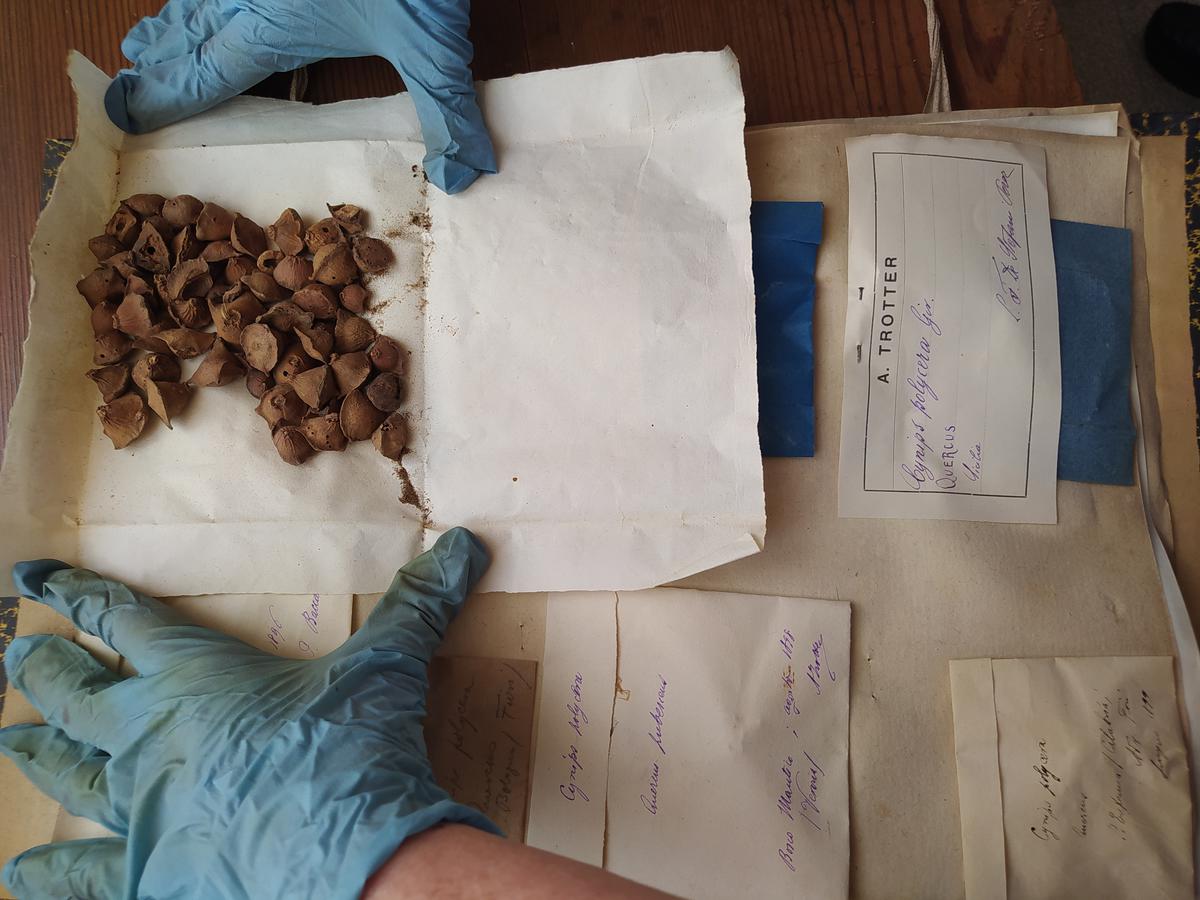
ENGLISH
GOETHEOME. The genome of Goethe's palm, the phylogeography and genomics of adaptation in Chamaerops humilis
The plant known as Goethe’s Palm (Chamaerops humilis) is the oldest (1585) of Padua Botanical Garden, and one of the highlights of the tour for visitors.
This project aims to build the genome of Goethe’s Palm and to compare its genetic diversity with that of natural populations of the species. Using methods at the leading edge of technology, researchers will explore the mechanisms that have contributed to the current distribution of the species, for example the key elements controlling growth traits, and other processes such as ageing. Expanding these areas of knowledge, it will be possible to shed light on processes involved in the responses of long-living plants to environmental stimuli, and their capacity for survival in different conditions, a key element in evaluating susceptibility to the changes now taking place.
The data collected will allow researchers to identify the plant's geographical region of origin, currently unknown, while serving also as an aid to further searches of a historical nature conducted in libraries and archives (e.g. the State Archive of Venice), aimed at obtaining confirmation and further information on how the plant came to Padua.
Project contacts: Dr. Núria Beltrán-Sanz, Prof. Francesco Dal Grande
In collaboration with: Dr. Carola Greve, LOEWE Centre for Translational Biodiversity Genomics, Frankfurt Am Main (DE); CREA - Difesa e Certificazione, Palermo; Montgomery Botanical Center, Miami (US)
Keywords: Goethe’s Palm, endemic area, species distribution, genome

TIMAEUS. Studying climate change adaptations through herbaria
Over recent decades, climate change has accentuated the rate at which species are becoming extinct. Highland species are especially vulnerable to the effects of climate change and consequently have suffered the most: some have disappeared altogether, whilst the habitat of others has been significantly reduced. Those that can still be found have had to change and adapt to the new conditions in order to survive. The aim of the Timaeus project is to investigate the nature of these changes, seeking to understand how species have adapted, and in response to which stress factors.
Thousands of specimens preserved in the collections of the historical herbarium, collected over a period of two centuries by botanists, biologists, lovers of nature and explorers, offer a unique opportunity to explore and quantify the changes that have occurred over time in a given species. Collecting and studying fresh samples of species in their habitats as they are today, it becomes possible to compare genetic diversity, past and present, also to understand how and in what measure a species has changed, and what are the implications for its future survival.
Project contacts: Dr. Yasaman Ranjbaran; Prof. Francesco Dal Grande
In collaboration with: MUSE – Museo delle Scienze, Trento; Stefan Prost, University of Oulu (FI)
Keywords: genome, herbaria, climate change, adaptation

DNA barcoding - the Saccardo collection
The mycology collection of Pier Andrea Saccardo, Prefect at the Padua Botanical Garden from 1879 to 1915, comprises nearly 70,000 specimens covering more than 4,000 holotypes, i.e. fungi used to describe a new species, and therefore unique. The purpose of this research project is to recover molecular data from holotype specimens preserved in the collection, in order to conduct a taxonomic reexamination of species described over a century ago, and to increase the amount of molecular information on species filed in public databases.
Project contacts: Dr. Nicolò Forin, Dr. Sebastiano Nigris, Prof. Barbara Baldan
In collaboration with: University of Turin
Keywords: fungi, Saccardo, DNA barcoding

History and botany: Pier Andrea Saccardo and his school
This project seeks to reconstruct the life, work and activity of Pier Andrea Saccardo (1845-1920), prefect of Padua Botanical Garden in the late 19th/early 20th centuries. One of the world’s most renowned mycologists, his most ambitious scientific project was the Sylloge fungorum omnium, a work he began in 1882 by classifying all species of fungi known at the time.
Here, the focus of the research is to examine the contribution made by Saccardo to the history of botany through a study of his works, like the Botanica in Italia, the Iconoteca dei botanici (Botanists Portrait Collection), an extensive collection of portraits started by him, but also the school of botanists that developed with him, and its particular interest in the history of botany, its leading figures, its locations and its collections. Worthy of mention among his many pupils are the algologist Achille Forti and the botanists Giovanni Battista De Toni, Carlo Spegazzini and Alessandro Trotter. The benefit of this study is that it sheds light on the history of the Botanical Garden and the Padua Botanical Museum during the 19th and 20th centuries, thanks not least to the books and the many archive documents collected by Saccardo, which are preserved in the Vincenzo Pinali and Giovanni Marsili Historic Library of Medicine and Botany.
Project contacts: Prof. Elena Canadelli, Dr. Claudia Addabbo, Dr. Tiziana Beltrame, Dr. Luca Tonetti
Keywords: Saccardo, portrait collection, history of botany, Saccardo school

Digitalization of the Achille Forti algarium
The aim of this project is to digitalize one of the most notable collections preserved in the Padua Botanical Museum, namely the algarium of Achille Forti (1878-1937), which consists of more than 100 parcels, comprising some 30,000 samples coming from different parts of the world, and from various collectors active during the late 19th and early 20th centuries. Thanks to the funds provided by the National Biodiversity Future Center (NBFC), Spoke 7, line 7 of the University of Padua, it will be possible to digitalize and take a first step at deciphering and interpreting the invaluable information inscribed on the labels of the sheets making up the algarium. With the digitalization of this collection, there is now the chance to promote the scientific and historical study of the Forti algarium still further, and to expand collaborations with other scholars in the sector, thanks not least to a comparative study of the main algaria dating from the same period as that of Forti, preserved in Italy, and to synergies with other projects for the digitalization of these collections currently under way in Italy.
Project contacts: Prof. Elena Canadelli, Dr. Claudia Addabbo, Dr. Dalila Giacobbe, Dr. Rossella Marcucci
Keywords: digitalization, algarium, Achille Forti

Achille Forti and his collections. The study of biodiversity in history and science
The purpose of the project is to study the figure, the work and the collections of the Veronese botanist Achille Forti (1878-1937). A pupil of Pier Andrea Saccardo, he made significant contributions to the science of algology, becoming a point of reference for many algologists of the time. His collections, which include the Algarium, the Diatom Gallery and the Collection of photographic plates, are preserved in the Padua Botanical Museum, whilst his books and miscellany of botany-related items are kept in the Vincenzo Pinali and Giovanni Marsili historical library of medicine and botany.
The research reconstructs Forti’s scientific activity and the history of the Algarium and the Diatom Gallery, as archives of biodiversity. The Algarium (to be digitalized under the project "Digitalization of the Achille Forti algarium" – see above) consists of more than 100 parcels, comprising some 30,000 samples coming from various parts of the world and dating from the period 1850-1936, collected by Forti himself, by colleagues or originating from other herbaria. The Diatom Gallery comprises around 7900 slides with fossilized and recent diatoms, collected and prepared by Forti or deriving from other collections.
With this integrated study of Forti's rich and layered collections, his writings and his correspondence, contributions of real interest are being made to current research on biodiversity, through the comparison of past and present and the relationship between history and science.
Project contacts: Dr. Claudia Addabbo, Prof. Elena Canadelli, Prof. Tomas Morosinotto
Keywords: Achille Forti, algarium, collections, biodiversity, history of botany

The micro-worlds of galls: the cecidological collection of Alessandro Trotter at the Botanical Museum of the University of Padua
The purpose of the project is to study and valorize the collection of galls (abnormal outgrowths of plant tissues, presenting a typical structure, caused by interaction with any one of various external organisms, such as insects, mites, bacteria or fungi), put together by Alessandro Trotter (1874-1967), pupil of Pier Andrea Saccardo (1845-1920), and housed today in the Botanical Museum of the University of Padua.
There are three objectives:
1) to enumerate the samples of Trotter's cecidological herbarium, in collaboration with Professor Mauro Mandrioli (Department of Life Sciences, University of Modena and Reggio Emilia);
2) to reconstruct the history of how “cecidology” — the science of galls (cecidia) — was founded and institutionalized disciplinarily as a point of intersection between botany, entomology and agricultural sciences;
3) to raise public awareness on matters of biodiversity, by reflecting on the interspecific relationships that characterize the formation of galls;
Accordingly, to valorize the role of historical naturalistic collections and the importance of interdisciplinary dialogue between the natural sciences and the history of sciences. In effect, the cecidological herbarium can be regarded as a ‘boundary collection’ occupying a place at the intersection of different disciplinary areas: historical-scientific, naturalistic, anthropological.
Project contacts: Dr. Tiziana Beltrame, Dr. Luca Tonetti, Prof. Elena Canadelli
In collaboration with: Prof. Mauro Mandrioli - University of Modena and Reggio Emilia
Keywords: cecidological herbarium, galls, Alessandro Trotter, biodiversity

